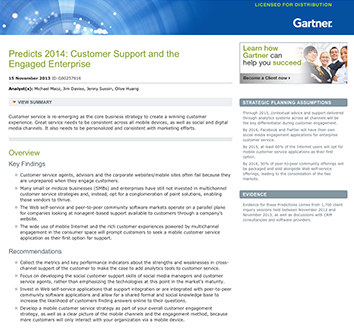We have interacted with customers digitally for years, but this is the first time that these interactions will transform the enterprise from the outside in.
The way in which enterprises are dealing with their customers digitally is changing, in what could be one of the biggest technology trends of the decade. The smart companies are already preparing themselves for the digital customer experience.
Electronic interactions have existed in some form or other since the mid-1990s, with the advent of web sites and ecommerce. Then mobile evolved over the last decade to became a major factor in peoples’ interaction with brands.
But Jean-Pierre Lemaire, director general of Orange Consulting, argues that the digital customer experience is now transforming how companies interact with customers in broader, more significant ways.
nexus of three developments
This is happening for three reasons, he says. The first is down to the emergence of a generation of digital natives who are steering the conversation.
“This is the first time that enterprises have faced a transformation that hasn’t been created in the enterprise environment, but which has been created in the personal environment,” Lemaire explains.
Secondly, an explosion of technologies including social networks, and mobile apps enable customers to do things that they never could before, including sharing their experiences with brands.
Finally, we are seeing an eruption of investment in IT across multiple continents. Large venture capital deals no longer only happen in Silicon Valley, they are also increasingly made in European and Asian markets.
evolve or suffer the consequences
In the past, developing the digital customer experience was the preserve of the innovative, but today all companies need to engage – or suffer the consequences.
Take banks as an example, says Lemaire. They have seen customers disappear physically from branches as mobile banking becomes more ubiquitous. Banks must therefore become more adept at engaging customers digitally, to create the same level of value as during in-branch interactions.
Mobile and web have generated incredible opportunities, but it is important to retain an omnichannel presence, explains Lemaire. He says that the voice channel still creates high levels of value for clients and enterprises.
As more channels emerge, companies will have more complexity to manage – and they must do it all in a way that provides a simple user experience when dealing with that brand.
the ‘phygital’ world
It’s crucial not to forget your physical brand presence when tackling the digital customer experience, especially as the two are becoming increasingly linked.
“There’s really no distinction between the worlds of off- and online anymore,” says Kat Matfield, service designer and product manager product and service innovation company Adaptive Lab. “You need to think about how you can blend these two physical and digital experiences.”
Matfield identifies the Bluetooth Low-Energy iBeacon technology pioneered by Apple as a good example of how these two worlds are merging. iBeacons systems sense when a phone is nearby, and push notifications to it, which could be anything from product information to a special offer. They are used in-store to guide, inform, and incentivize customers on their phones as they move around the shop.
analyzing customer experience data
Mobile and social media channels also provide companies with more ways to analyze customer behavior than ever before, says Alex Kozloff, head of mobile at the UK’s Internet Advertising Bureau.
“One example is TV programmers. They love Twitter and the immediate feedback that they get from these programs,” she says. “Likewise, marketers or anyone in retail have a constant feedback loop, telling them what people are doing on their site, and where they’re going.”
One of the most important outcomes of this whole process will be gaining a single view of the customer. For years, enterprises have been building different systems using a range of platforms, which hold different views of a single customer. Instead of being tied to a particular sales channel, business unit, or service area, a truly integrated digital customer experience would unify all of these.
The stakes are rising, says Andrew Walker, managing director of Innometrics, a company that specializes in software that helps its clients profile customers.
“A single customer view has never been able to keep up with this pace of technological change,” he says. “Now you need a single customer view for marketing and sales, and to do that it needs to be real time and have all the information up to date.”
Instead of trying to boil the ocean, he advises companies to be incremental in their integration of customer data. “If you approach it as an all or nothing type of thing, you’ll never get there,” he says.
But companies must start addressing these issues now, because the digital customer experience is evolving at a breakneck pace. “It’s not in the future, but today. And digital transformation means that the enterprise will change significantly the ways in which they interact with their clients,” Lemaire says. This is just as true for travel, as it is for the optical industry, or for car manufacturing, he concludes.

|